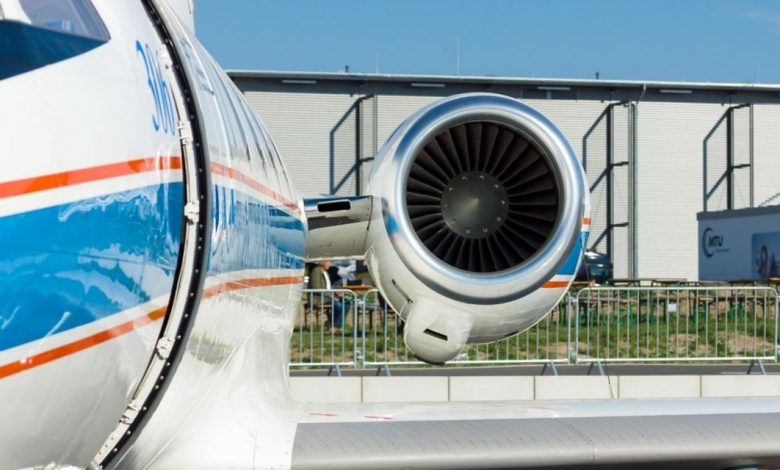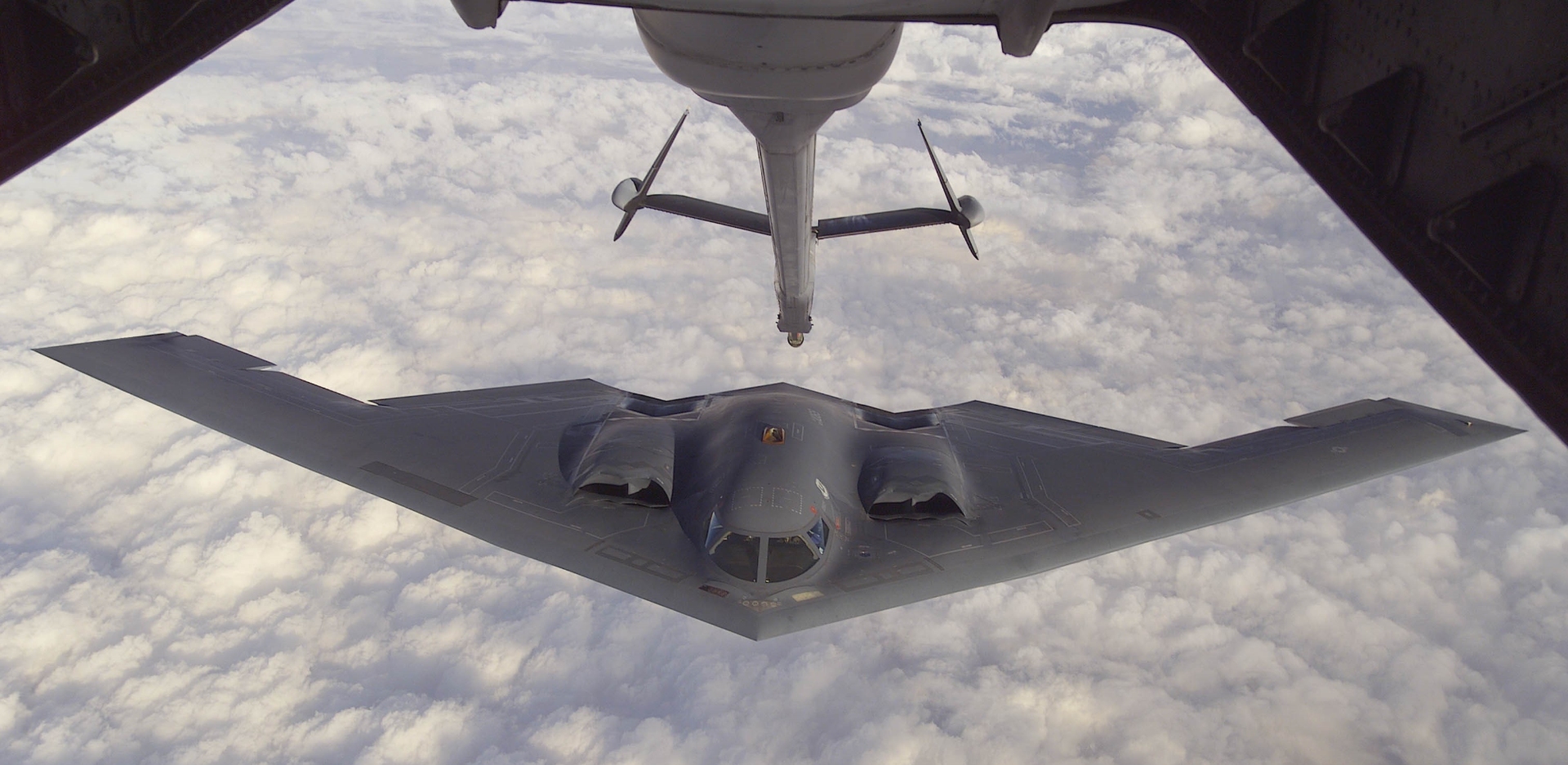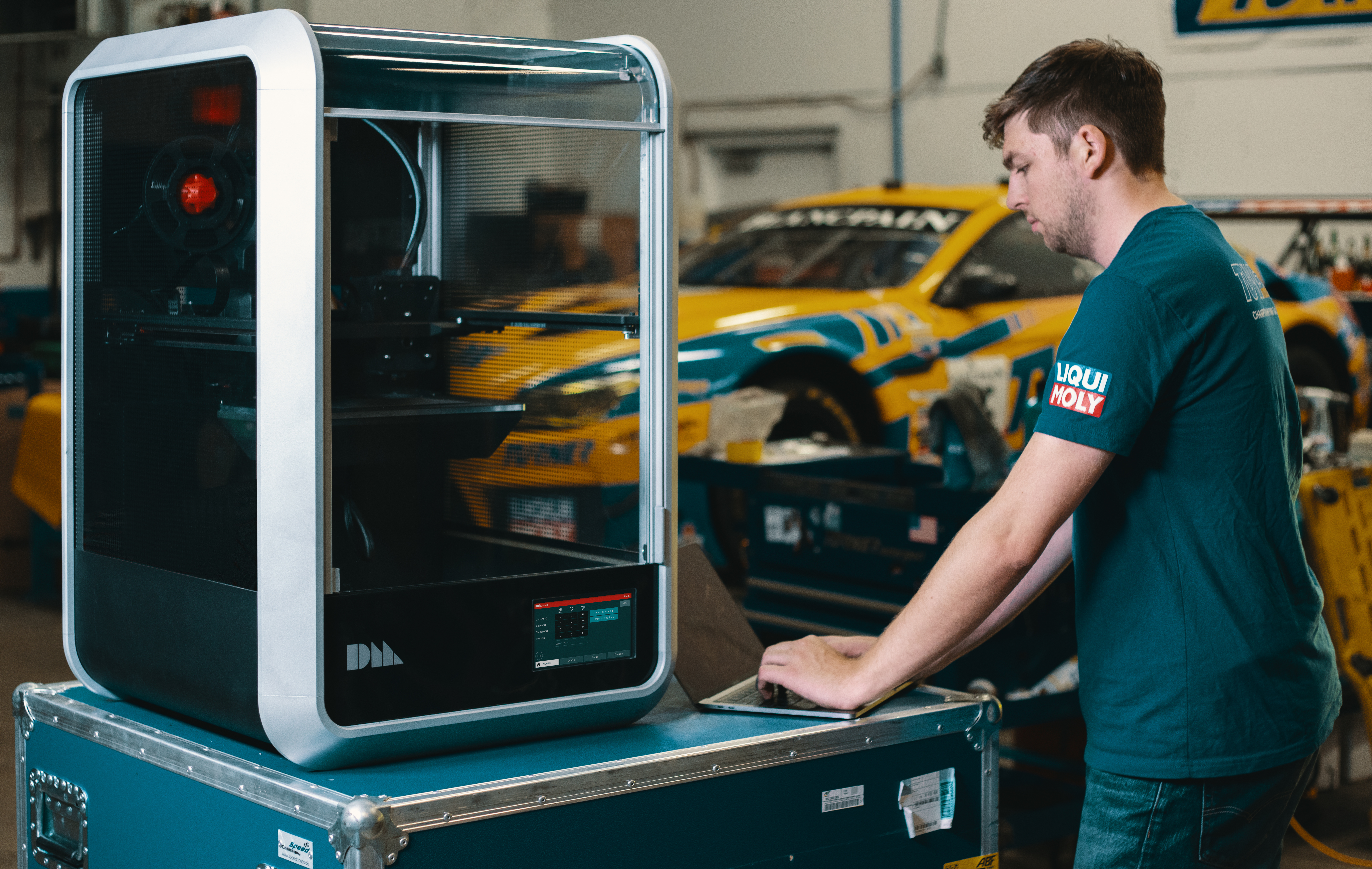August of 2020 was dominated by major developments in the aviation sector, with breakthrough announcements from Honeywell, the FAA, and the U.S. Air Force regarding 3D printed flight-ready components. On the business side of things, DyeMansion raised $14M, Desktop Metal went public with a $2.5B valuation, and Arevo raised $25M alongside the launch of its high-speed Aqua 2 3D printer.
Flight-ready components in aviation and aerospace
Aerospace manufacturer Honeywell Aerospace announced that it had received Federal Aviation Administration (FAA) certification for its first 3D printed flight-critical engine component. The certified #4/5 bearing housing is a core structural part in the ATF3-6 turbofan engine of the Dassault Falcon 20G, a well-known maritime patrol aircraft. Honeywell has since installed the part in an operational Falcon 20G, and printed dozens more over the course of 2020.
Jon Hobgood, Vice President of Manufacturing Engineering at Honeywell Aerospace, stated: “This is a major milestone for Honeywell because it demonstrates the maturity of our Additive Manufacturing operations and paves the way for us to print more certified, flight-critical parts in the future. It also is a major win for the additive industry, as flight-critical parts face heavy scrutiny and high standards for qualification and installation on aircraft, but this shows it can be done.”

Around the same time, the FAA also awarded Auburn University’s National Center for Additive Manufacturing Excellence (NCAME) with a $3M grant to research the 3D printing of commercial aircraft components. The two year project will see the NCAME engineers delve deeper into metal 3D printing and aviation materials to fine-tune the process parameters required to fabricate end-use critical components.
Steve Taylor, co-principal investigator on the project, added, “By teaming our faculty, who are global leaders in research on additively manufactured metal components, with the top engineers and scientists at FAA, we are confident that we can develop new knowledge that will help engineers design safer, more efficient aircraft. Auburn University is honored to be collaborating with the FAA.”
Over in aerospace, 3D printer manufacturer Farsoon was proud to announce that it had helped 3D print a set of polymer static firing skirts featured on China’s Long March-5 carrier rocket. The multi-stage vehicle, which is currently carrying the Tianwen-1 Mars probe, is expected to reach the red planet in February of 2021. In this case, the 3D printed firing skirts are crucial to the inter-stage separation process, and make up a section of the cylindrical inner structure that lines the 15.7m circumference of the rocket.
In the defense sphere, a team of engineers from the Oklahoma City Air Logistics Complex, a wing of the Air Force Sustainment Center, made history by becoming the first to successfully test a 3D printed metal component inside the engine of an Air Force aircraft. The part in question was a 3D printed anti-ice gasket, which is critical if the TF33-P103 engine of the B-52 Stratofortress is to operate in a safe and efficient manner in sub-zero temperatures. At the time, the gasket was in short supply, so the successful engine test has since paved a new route for spare part production.
Johnny Tsiao, Propulsion Structural Competency Lead at the Life Cycle Management Center, explained, “This accomplishment is truly a historical first. This is a digitally designed and digitally engineered component that represents a substantial milestone in Air Force sustainment. Although it is a basic component, the technology our OC-ALC team has developed will help resolve supply chain issues and help bring further capacities to support the warfighter.”
The Air Force Life Cycle Management Center also announced that it had begun 3D printing a protective component for the B-2 Spirit (the Stealth Bomber). The 3D printed part was a permanent protective cover found on the airframe mounted accessory drive (AMAD) decouple switch, which is located in the Stealth Bomber’s cockpit. With the ultimate aim of ensuring the aircraft stays relevant in the coming years, the cover is designed to prevent pilots from accidentally activating the AMAD switch, which links the engines to the hydraulic power of the B-2.
Roger Tyler, an Aerospace Engineer with the B-2 Program Office, added, “Additive manufacturing allowed us to rapidly prototype designs, and through multiple iterations, the optimum design for the pilots and maintainers was created. We have completed the airworthiness determination and are currently in the final stages to get the covers implemented on the B-2 fleet by early 2021, which will be the first additively manufactured part to be approved and installed on the B-2.”

August’s funding and business announcements
The eighth month saw 3D printing service bureau Voodoo Manufacturing shut down for good. The New York-based startup explained that the COVID-19 pandemic and its financial implications were the root cause. A lack of clear end in sight meant that Voodoo and its print farm of over 200 3D printers “couldn’t make it to the other side”, despite repurposing two of its manufacturing plants to print PPE for medical professionals.
On a more positive note, automated post-processing system manufacturer DyeMansion raised $14M in a Series B funding round. The company has since been using the capital to transition into fully-digital manufacturing with increased automation across all of its products. A portion of the funding is also being used to strengthen the firm’s global presence and fulfillment capabilities, with increased investments in demo facilities, commercial business infrastructures, and the hiring of new regional application consultants.
3D printing composites specialist AREVO also announced the conclusion of a $25M Series B funding round, which it is using to hire new engineers and drive the ongoing development of its composite 3D printing technology. Alongside the funding was the launch of the company’s Aqua 2 3D printer, a high-speed large-format machine specialized in printing continuous carbon fiber-reinforced parts.
Hans Tung, a Managing Partner at GGV Capital, said, “AREVO is led by an experienced team with a solid technological foundation and 3D printing manufacturing know-how at scale, allowing it to offer breakthrough products at competitive prices.”
In what is possibly one of the most important stories of the year for our industry, 3D printer manufacturer Desktop Metal went public by agreeing to merge with blank check company Trine Acquisition Corp. The move raised an estimated $575M for the company, which was valued at $2.5B following the event. Desktop Metal has been using its funds to accelerate its growth in the metal 3D printing space, serving over 60 countries and a whole host of industries including automotive, aerospace, and consumer products to name a few.
“We are at a major inflection point in the adoption of additive manufacturing, and Desktop Metal is leading the way in this transformation,” said Ric Fulop, Co-founder, Chairman & CEO of Desktop Metal. “We are energized to make our debut as a publicly-traded company and begin our partnership with Trine, which will provide the resources to accelerate our go-to-market efforts and enhance our relentless efforts in R&D.”

Subscribe to the 3D Printing Industry newsletter for the latest news in additive manufacturing. You can also stay connected by following us on Twitter and liking us on Facebook.
Looking for a career in additive manufacturing? Visit 3D Printing Jobs for a selection of roles in the industry.
Featured image shows the ATF3-6 turbofan engine. Photo via Honeywell Aerospace.



